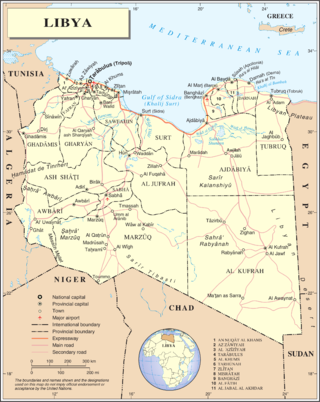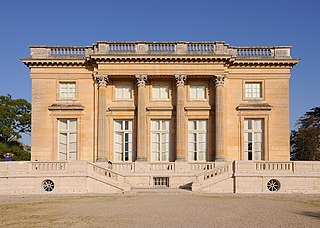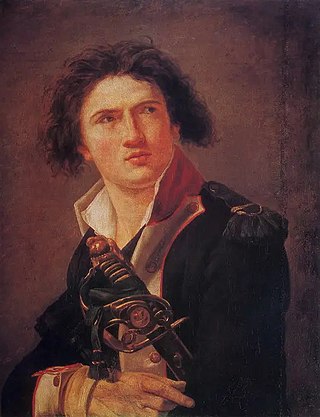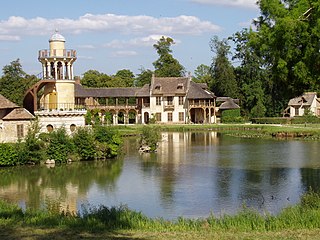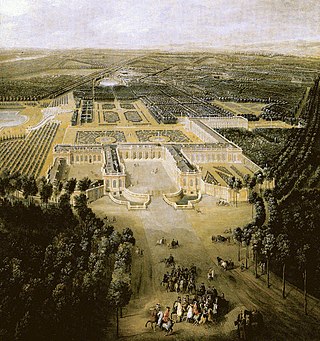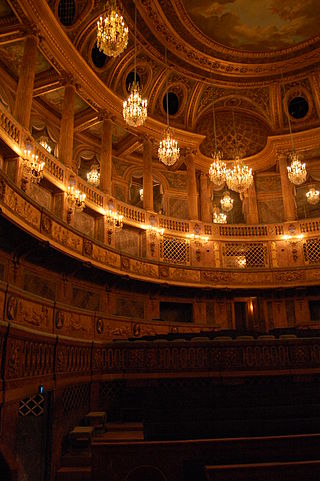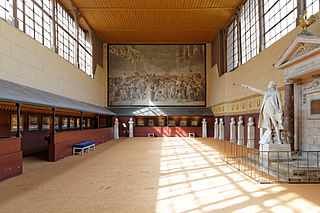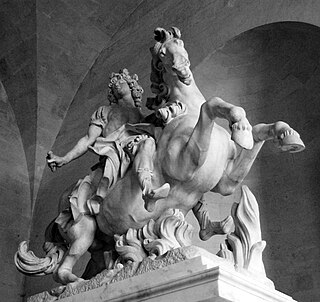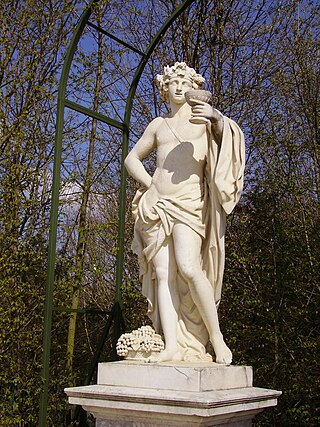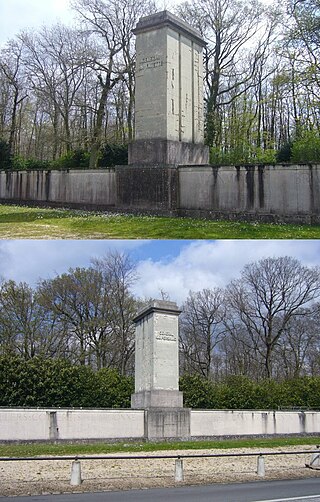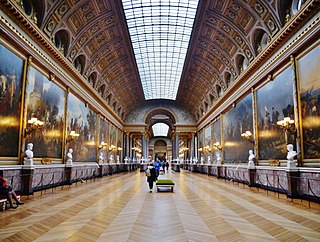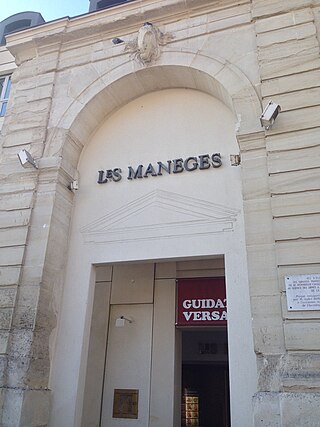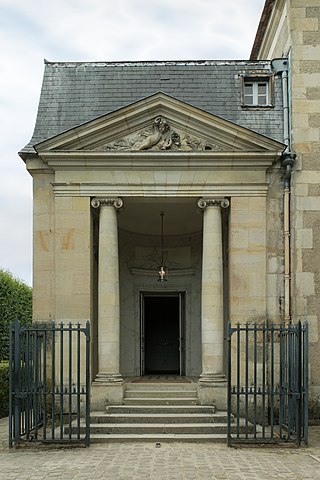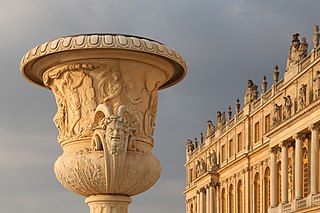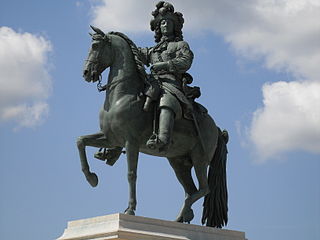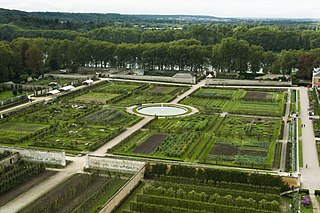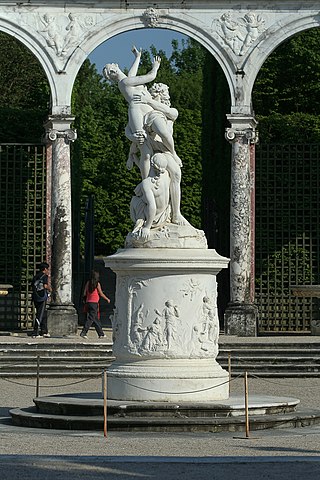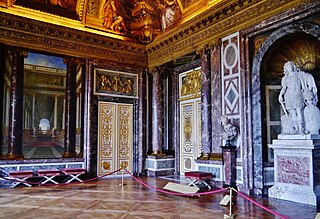21 Sights in Versailles, France (with Map and Images)
Legend
Welcome to your journey through the most beautiful sights in Versailles, France! Whether you want to discover the city's historical treasures or experience its modern highlights, you'll find everything your heart desires here. Be inspired by our selection and plan your unforgettable adventure in Versailles. Dive into the diversity of this fascinating city and discover everything it has to offer.
Sightseeing Tours in VersaillesActivities in Versailles1. Borne du Serment de Koufra
The Capture of Kufra was part of the Allied Western Desert Campaign during the Second World War. Kufra is a group of oases in the Kufra District of south-eastern Cyrenaica in the Libyan Desert. In 1940, it was part of the colony of Italian Libya Libia Italiana, which was part of Africa Settentrionale Italiana (ASI), which had been established in 1934. With some early assistance from the British Long Range Desert Group, Kufra was besieged from 31 January to 1 March 1941 by Free French forces which forced the surrender of the Italian and Libyan garrison.
2. Le jardin Français
The Petit Trianon is a Neoclassical style château located on the grounds of the Palace of Versailles in Versailles, France. It was built between 1762 and 1768 during the reign of King Louis XV of France. The Petit Trianon was constructed within the park of a larger royal retreat known as the Grand Trianon.
3. Lazare Hoche
Louis Lazare Hoche was a French military leader of the French Revolutionary Wars. He won a victory over Royalist forces in Brittany. His surname is one of the names inscribed under the Arc de Triomphe, on Column 3. Richard Holmes describes him as "quick-thinking, stern, and ruthless... a general of real talent whose early death was a loss to France."
4. La Maison de la Reine
The Hameau de la Reine is a rustic retreat in the park of the Château de Versailles built for Marie Antoinette in 1783 near the Petit Trianon in Yvelines, France. It served as a private meeting place for the queen and her closest friends and as a place of leisure. Designed by Richard Mique, the queen's favoured architect, with the help of the painter Hubert Robert, it contained a meadowland with a lake and various buildings in a rustic or vernacular style, inspired by Norman or Flemish design, situated around an irregular pond fed by a stream that turned a mill wheel. The building scheme included a farmhouse,, a dairy, a dovecote, a boudoir, a barn that burned down during the French Revolution, a mill and a tower in the form of a lighthouse. Each building is decorated with a garden, an orchard or a flower garden. The largest and most famous of these houses is the "Queen's House", connected to the Billiard house by a wooden gallery, at the center of the village. A working farm was close to the idyllic, fantasy-like setting of the Queen's Hamlet.
5. Galerie des Cotelle
The Grand Trianon is a French Baroque style château situated in the northwestern part of the Domain of Versailles in Versailles, France. It was built at the request of Louis XIV as a retreat for himself and his maîtresse-en-titre of the time, the Marquise de Montespan, and as a place where he and invited guests could take light meals (collations) away from the strict etiquette of the royal court. The Grand Trianon is set within its own park, which includes the Petit Trianon.
6. Opéra Royal
The Royal Opera of Versailles is the main theatre and opera house of the Palace of Versailles. Designed by Ange-Jacques Gabriel, it is also known as the Théâtre Gabriel. The interior decoration by Augustin Pajou is constructed almost entirely of wood, painted to resemble marble in a technique known as faux marble. The excellent acoustics of the opera house are at least partly due to its wooden interior.
7. Salle du Jeu de Paume
The Jeu de Paume room is located at no. 1 rue du Jeu de Paume, in the heart of the Saint-Louis district, in Versailles (Yvelines). It is famous for the oath of the Jeu de Paume that the deputies of the Third Estate took there on June 20, 1789.
8. Statue équestre de Louis XIV sous les traits de Marcus Curtius
The Equestrian Statue of King Louis XIV is a sculpture designed and partially executed by the Italian artist Gian Lorenzo Bernini. Bernini first discussed the project while in France in the mid-1660s, but it did not start until later in the decade, when back in Rome. It was not completed until 1684 and then shipped to Paris in 1685. Louis XIV of France was extremely unhappy with the result and had it placed in a corner of the gardens of Versailles. Soon after, the sculpture was modified by François Girardon and altered into an equestrian sculpture of the ancient Roman hero Marcus Curtius.
9. Le colérique
The grande commande was a commission ordered by Louis XIV for statues intended to decorate the parterre d’eau of the gardens of the Palace of Versailles, as initially conceived in 1672. The commission, which included 24 statues and four groups, was ordered in 1674. Designed by Charles Le Brun from Cesare Ripa’s Iconologia, the statues were executed by the foremost sculptors of the day.
10. Musée Lambinet
The Musée Lambinet is a municipal museum in Versailles telling the history of the town. Since 1932, it has been housed in the hôtel Lambinet, a hôtel particulier designed by Élie Blanchard, built in the second half of the 18th century by a part of the Clagny lake and left to the town of Versailles by the heirs of Victor Lambinet in 1929. It has been classed as a monument historique since 1944. Its garden façade has a sculpted pediment representing an allegorical figure of architecture.
11. Monument Pershing - Lafayette
The Pershing - Lafayette Monument is a memorial located on the heights of Versailles, erected in tribute to the American army that fought in the First World War and the army of the American War of Independence, on the other hand.
12. Apollon servi par les nymphes
Apollo Served by the Nymphs is a group of seven marble statues made in 1666 by François Girardon and Thomas Regnaudin for the Grotto of Tethys at the Palace of Versailles. They are accompanied by the Chevaux du Soleil, two groups signed by Gilles Guérin for one and the Marsy brothers for the other.
13. Musée de l’Histoire de France
The Musée de l'Histoire de France is a museum that was created by King Louis Philippe I in the Palace of Versailles and opened in 1837. At the time, it represented an ambitious project of national reconciliation between the hitherto competing narratives of the French monarchy and the French Revolution, to which Louis-Philippe devoted significant personal attention. Whereas it gradually faded in importance as a museum in the later 19th century, its lavish historicist decoration remains a major exemplar of the art of France's July Monarchy.
14. Bâtiments du Manège
The Armoury Building was a former military building under Napoleon III in Versailles, France. It was demolished in 1988 with the exception of its gate which remained on the Avenue du Général-de-Gaulle.
15. Queen's Theatre
The Théâtre de la Reine ou Théâtre du Trianon is a theater built for Queen Marie-Antoinette by the architect Richard Mique from June 1778 to July 1779. It is located in the grounds of the Petit Trianon, in the park of the Palace of Versailles, hidden between the tree tunnel of the French Garden and the tall trees of the Alpine Garden. The exterior of the building, which looks like an outbuilding, contrasts with the sophisticated decoration of its interior, which is adorned with blue silk and velvet and gilded sculptures, yet is all pretense. It was inaugurated in 1780, ten years after the opening of the "Grand Théâtre", as the Royal Opera of Versailles was then called.
16. Vase de la Paix
The Peace Vase is a marble vase sculpted in 1684 by Jean-Baptiste Tuby. Located on the terrace of the garden of Versailles, it faces the vase of war, sculpted by Antoine Coysevox. It celebrates the Treaties of Aachen and Nijmegen, which ensure peace between France, Spain and Holland.
17. Statue équestre de Louis XIV
The equestrian statue of Louis XIV is a bronze equestrian statue of the King of France Louis XIV, located on the Place d'Armes in front of the Palace of Versailles. Until 2008–2009, it was located in the cour d'honneur.
18. Le Potager du Roi
The King's Vegetable Garden is a 9-hectare vegetable garden, created in 1683 near the Palace of Versailles by the director of the Royal Orchards and Vegetable Gardens Jean-Baptiste de La Quintinie, at the request of King Louis XIV to supply the court of Versailles.
19. L'Enlèvement de Proserpine par Pluton
The Abduction of Proserpine by Pluto, a masterpiece by François Girardon inspired by the story of the abduction of Persephone or Proserpina, is a marble-bound group completed around 1696, kept in the orangery of the Palace of Versailles.
20. Grand Appartement de la Reine
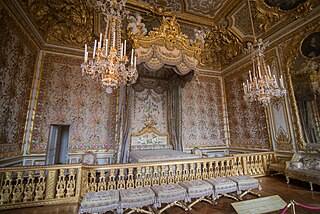
The Queen's Grand Apartment is a set of five salons located on the first floor of the central body of the Palace of Versailles. These rooms were the reception areas for the sovereigns of France Marie-Thérèse, Marie Leszczynska and Marie-Antoinette. Both for the Duchess of Burgundy as dauphine. These spaces are now presented as they were under Marie-Antoinette, when she left them on October 6, 1789.
21. Grand Appartement du Roi
The King's Grand Apartment is a set of seven salons in the Palace of Versailles designed to be the setting for the monarch's official acts. These salons are very richly decorated, in the Italian fashion of the time of Louis XIV.
Share
How likely are you to recommend us?
Disclaimer Please be aware of your surroundings and do not enter private property. We are not liable for any damages that occur during the tours.
